Weavers complained about their fate, and embroiderers enjoyed luxuries. Kat ... had to earn some extra money, although he was still better off than many scientists. Which professions a thousand years ago were really profitable to work in and which ones should definitely be avoided?
Imagine that you are traveling back in time to a medieval city for a few days. It is a market day, there is a lot of buzz around. People and animals crowd and jostle, merchants praise overseas goods, and craftsmen their products. Would you like to take this opportunity to bring gifts for family and friends from this amazing journey. But how to get money for them?
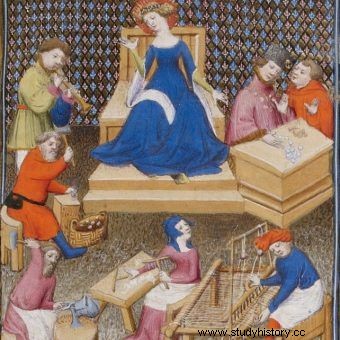
Earning a living in the Middle Ages is a hard piece of bread. Illustration to "De Claris mulieribus" by Giovanni Boccaccio, 1403
Earning a living in the Middle Ages was not an easy task. Financial independence was beyond the reach of most lower-class people. You could get rich in many ways, for example through trade or warfare, but in these areas you had to have some "back" at the very beginning. Only its free citizens were entitled to work in the medieval city. If you wanted to become a merchant, for example in medieval London, you would have to be either merchant or… money. Only that would allow you to join the guild.
Work on construction
Perhaps, then, it would be a good solution to employ seasonal manual work as an unskilled worker? It may sound uninviting, but in fact, you could count on them for the worst salary. As today, in the Middle Ages, "construction" was a thriving sector of the economy. For example, masons working on the construction of Exeter Cathedral in 1306 could earn about £ 7 a year. It was by no means a low sum.
One hundred years later, in Lyon, a bricklayer assistant received a monthly salary of 20-25 Solids. It allowed me to cope with everyday needs quite well. One Turkish solid was equal to 12 denarii, and a pound of bread cost just over a denarius.
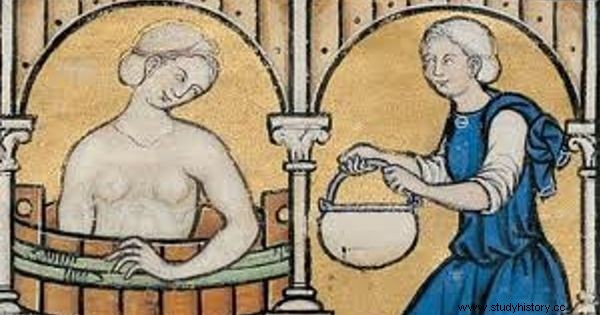
In the Middle Ages, you might have become, for example, a bathroom worker.
The stonemason and carpenter were even better off. In medieval England, they earned a dozen or so pounds a year, which placed them next to university-educated lawyers or doctors . For comparison, it can be mentioned that the prosecutor of the city of Lyons received an annual salary only about twice as much as a bricklayer assistant ...
For the manually gifted
Craftsmanship can be recommended to those who do not like the life of a builder. Here, however, you had to take into account that the beginnings could be difficult. Journeymen who wanted to apprentice with the master had to take into account the expenses, for example, the entry fee. And they earned little:at the turn of the 14th and 15th centuries, they could count on a daily salary of 1-3 groszy in Kraków. With a bit of luck it was enough to buy a pot of butter or a pair of eggs
The educated craftsmen fared much better. Evidence of their good situation can be, for example, the number of masters at the disposal of the fifteenth-century cities. There were, for example, 92 furriers and 23 goldsmiths in medieval Wrocław! The town was also inhabited by 93 tailors, 96 shoemakers and 30 sausage makers. And yet, apart from them, representatives of other crafts also had their plants, including hat makers, potters, soap makers, millers ...
Pharmacists, who, apart from producing pharmaceuticals, also prepared wines and sweets, fared quite well. In the fourteenth-century Krakow, a certain Konrad earned so much that he was able to buy a municipal property in 1333. Another pharmacist, Piotr, thanks to his earnings, managed, together with his sons, to start a profitable business in the form of trade in saltpetre. The pharmacist of Kazimierz Wielki had his own house on Grodzka Street, and his colleague, Grzegorz, owned several real estates in the city.
For the gifted only…
The principle of remuneration for work in the case of crafts was simple. In the Middle Ages, the unique skills of, for example, the masters of stained glass, were highly valued. Their wares were as rare and expensive as the precious stones. Making the stained glass window required cooperation between the glazier and the painter, and the workload was high.
What were the prices? At the beginning of the 15th century, the Teutonic Knights paid a fine for the white glass for stained glass in the castle in Ragneta at the beginning of the 15th century for a hundredweight (i.e. about 50 kilograms), and for colored glass - 1 fine and 5 ends for a hundredweight. The lower cost in this case was only due to the fact that it was ordered directly from the steelworks.
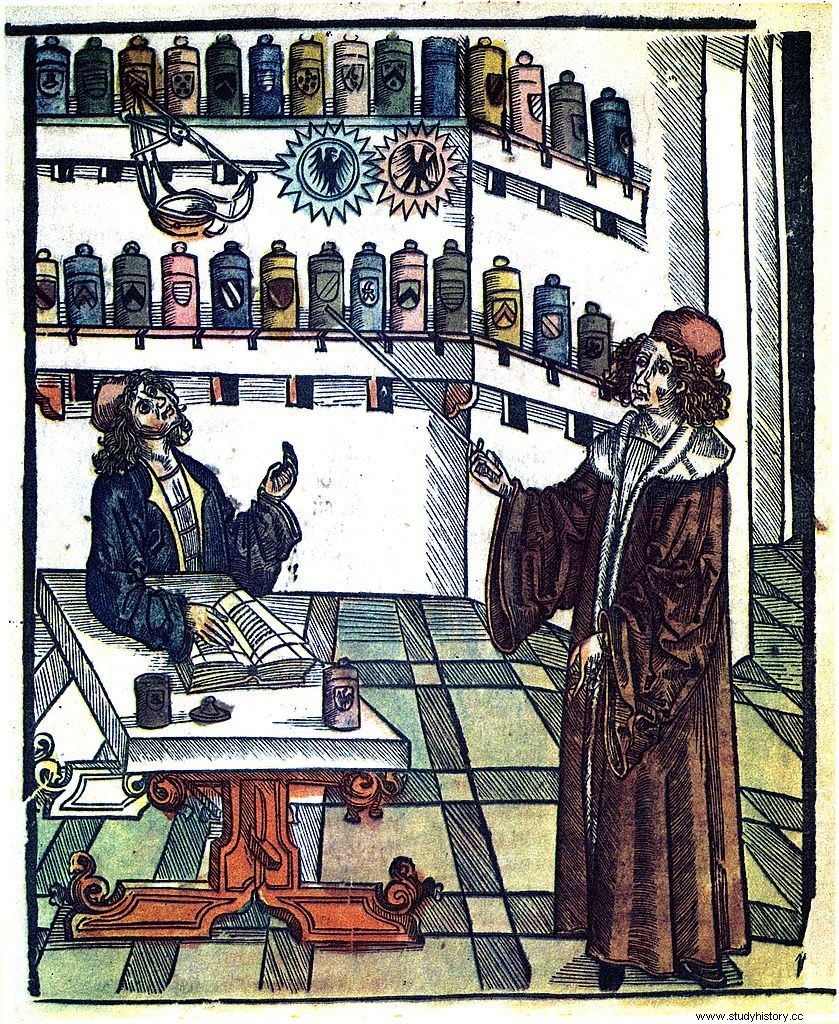
"Doctor and pharmacist", illustration from "Medicinarius" by Hieronymus Brunschwig.
It is still a high price. It is enough to mention that Andrzej, a well-earning pharmacist from Kraków, could count on 12 fines each year. So the stained glass glass itself cost more than his monthly earnings ... The heroine of the novel Big Fire by Jeanne Bourin, the wife of the stained glass artist, therefore cannot complain about her fate. Her interlocutor comments on her location as follows:
Your home is fertile and your husband has made a solid reputation for himself. He has a good profession. The owner of it does not have to pay head tax or tithing, is not bound by the law of compulsion, even enjoys the privilege of cutting trees and ferns free of charge, and is doing well.
… and especially for men
Was the craft an equally profitable faculty for everyone? It depends. In a typically female job, the chances of receiving an exorbitant amount for work were slim. Let us quote the statement of weavers liberated by Iwajn in Chretien de Troyes' romance Knight with a lion who complain about their fate:
We will always weave silk, but we'll never be better dressed ourselves. We will always be poor and naked, we will always be hungry and thirsty. We will never be able to afford better food […]. Whoever earns twenty su a week will never get out of poverty [...], and when we suffer from poverty, the one we work for becomes rich with our toil [...].
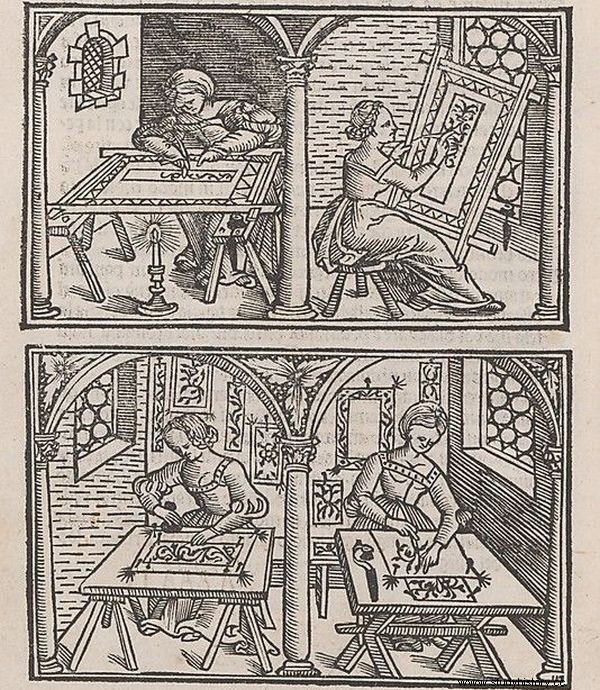
The work of embroiderers required patience and precision. Image from the book "De rechami per elquale se impara in diuersi modi lordine e il modo de recamare ... Opera noua" published by Alessandro Paganino.
Fortunately, there were exceptions. For example, another heroine of the novel Wielki Fire does not complain about her fate , embroiderer Isambora. She lives and works with relatives of her mistress, Countess Adela, and two other servants, Awelina and Bazyli. Their work meant so much to the countess that the women could not go home even for Christmas . In fact, their profession was very much in demand in medieval Europe.
Especially the English were famous for their masterful embroidery. Their works, called opus anglicanum, characterized by precise stitches and subtle color combinations of silk threads. They were wanted all over the thirteenth and fourteenth century Europe. They were distinguished above all by golden threads and ornaments that sparkled beautifully in the glow of the candlelight of the churches.
In 1246, Pope Innocent IV was so delighted with the decorated robes of English clergy who appeared at his court that he asked where they were made. When he heard that in England, he was to describe the country as "the Garden of Paradise." He also sent letters to the Cistercian order asking them to send him embroidered fabrics. One of these beautiful robes belonging to Pope Clement V, with embroidery depicting the Passion, can still be seen today in the Saint-Bernard de Comminges cathedral in Gascony.
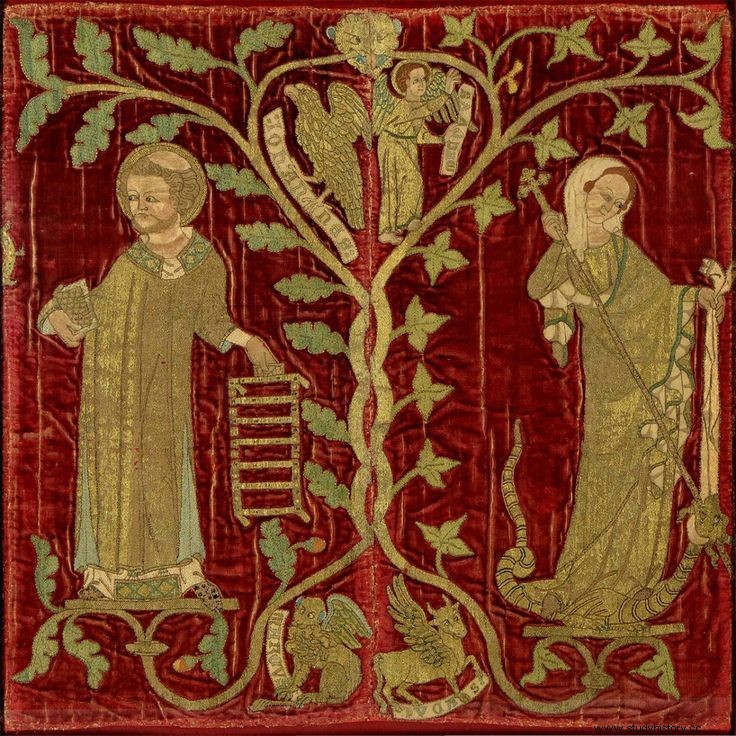
The embroidery on the robes of the English clergy delighted Pope Innocent IV so much that he ordered the fabrics decorated with them to be brought for himself. An example of the embroidery of an opus anglicanum, circa 1320-1340.
Interestingly, it was also a female-dominated craft. So much so that sources about their skills and earnings have been preserved. In the fall of 1239, a talented embroiderer named Mabel, for example, commissioned by Henry III Plantagenet, decorated a chasuble and sacrificial garments, for which she received a sum of 10 pounds. When the king asked for more pearls and gold, he had to pay extra. The work itself took two years!
Soon after, Mabel received another commission, this time to decorate the silk fabric with gold and the figures of the Virgin Mary and St. John. The work was to go to Westminster Abbey. The artist received £ 10 again, and the king also paid for the materials. Henryk was extremely pleased with this cooperation. A few years later, while in Bury St Edmunds, where Mabel lived, he gave her precious fabrics and a coat decorated with rabbit fur. All "in thanks for many years of service to the king and queen."
A warm job at the office
If you do not have manual skills, and you rather excel at mental work, maybe you would be encouraged by a job as a city writer? Monthly in medieval Krakow, he earned about 2.5 fines. He could afford to buy beef or wine. Wrocław paid similarly - the first city writer earned 28 groszy a week, so a little over half the fine (one fine is 48 groszy). The second writer could count on 18 groszy. Moreover, they received benefits in kind. These included clothes and food, and probably also housing and firewood.

How about a city writer? You could afford beef or wine! Jean Le Tavernier, "Portrait of Jean Miélot", after 1456
For comparison, a Wrocław master of municipal buildings earned 9 groszy a week, a village head - only 8 groszy, and a guard on the embankment and a customs officer on the Oder only 3 groszy. Twenty city guards in the 14th century Krakow, who kept order in the city and pursued criminals, received a salary of 12 groszy a week.
Hospital masters were also paid worse than the city writer. They looked after the sick or the poor, were responsible for hospital order, keeping a register of patients. They provided information to families and cared for food supplies. They were entitled to an annual salary ranging from 4 to 6 fines. Meanwhile, Silesian beer from Świdnica, considered a delicacy, cost 8 fines per cart!
As a consolation, however, let us add that Wrocław hospitals received 5 pounds of butter a week in summer, half an ox for Easter and autumn, and 6 geese at Christmas. They also had a guaranteed annual salary in their old age, as well as a shelter and food for their successor.
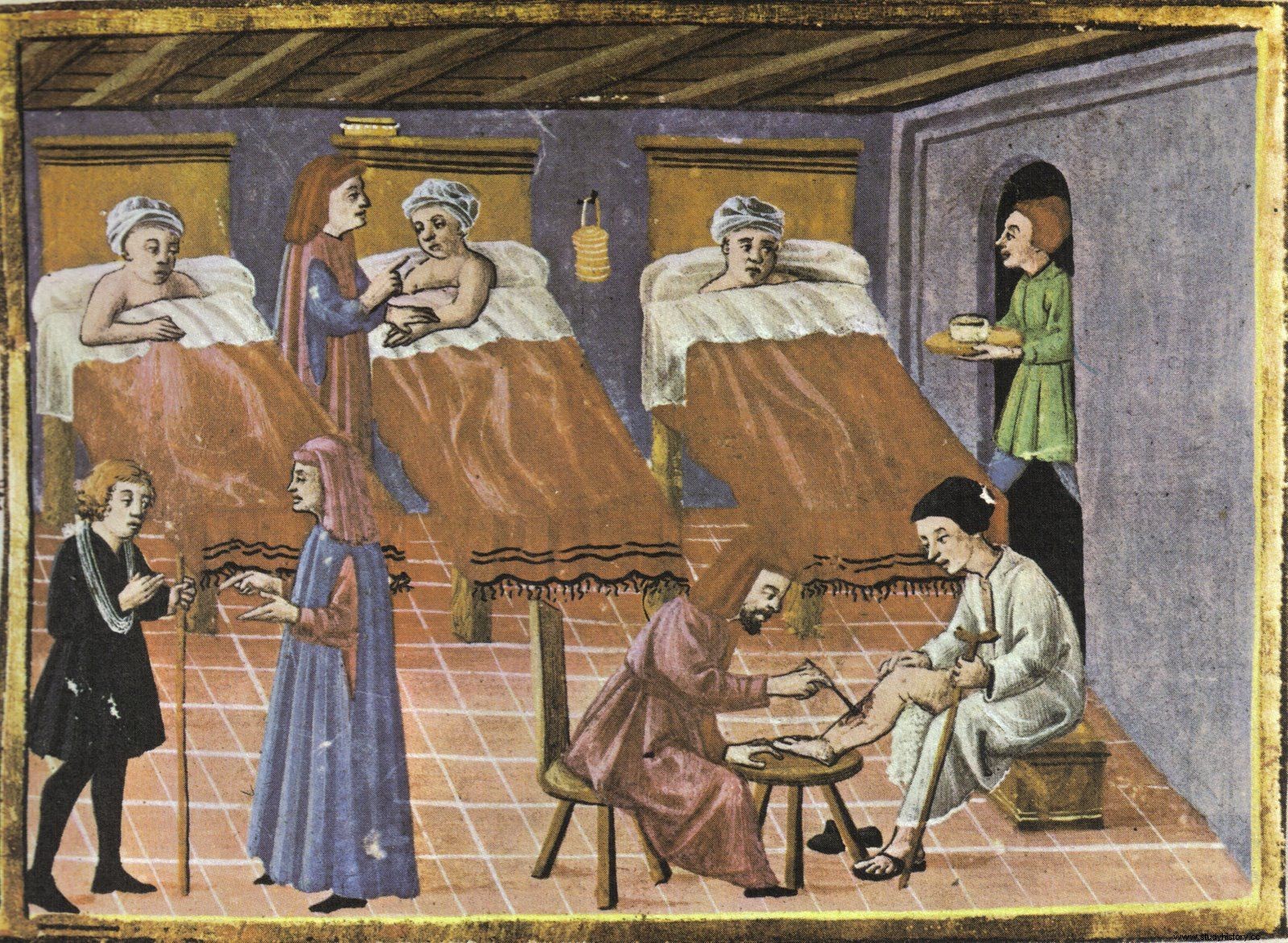
The hospital masters dealt with, among other things, the care of the sick, keeping the patient register and providing information to families, as well as supplying the hospital with food.
Not bad but well off
The profession of executioner was perhaps not the most pleasant one, but nevertheless it was an integral part of the urban community. And quite well paid. In Krakow, this so-called "little good" could count on a weekly salary of a dozen or so groszy. For his salary, he could easily buy a pot of wine, a quart of beer, or a cow.
This income was increased by various extracurricular activities. The executioners used to torture, rebuked pigs to their farms, caught and killed dogs and, together with their wives, ran lupanary, or brothels. They also traded the bodies of the doomed, or rather the parts of them that were needed by medics or alchemists, and considered magical mandrakes.
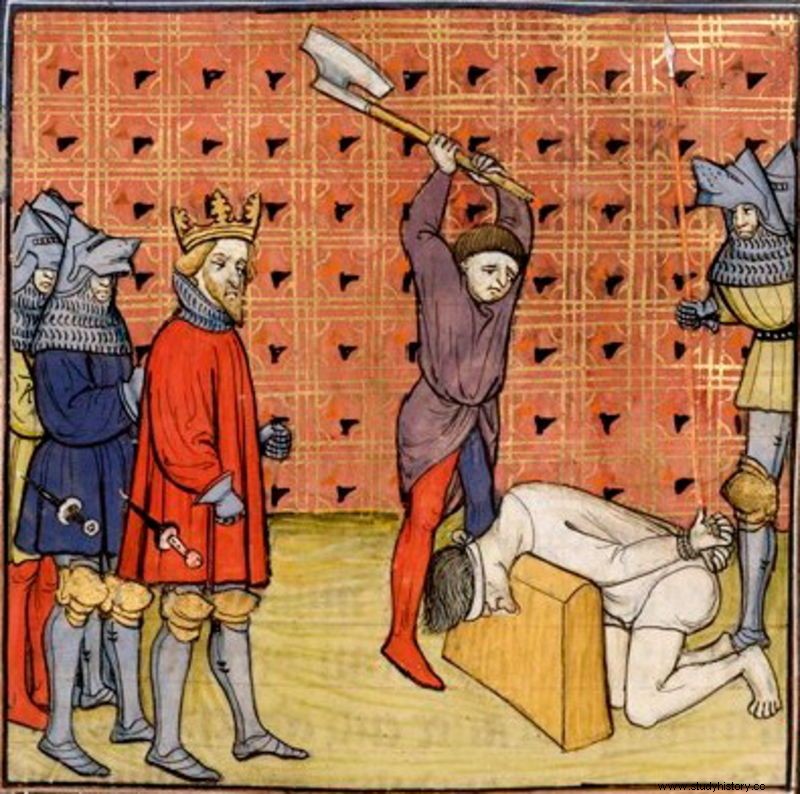
The profession of executioner was perhaps not the most pleasant one, but nevertheless it was an integral part of the urban community. Illustration from the 14th-century manuscript "Chroniques de France ou de St Denis".
At least in the beginning, getting this particular job was not that difficult either. Although the profession became hereditary over time, in the fourteenth century, you could meet jurors and even convicts in this position. However, the latter quickly fell out of favor due to… inexperience.
The professor cannot afford… a toga
If you were looking for a quick and profitable way to get rich while traveling through time, we strongly advise against…. a career in science. In the Middle Ages, professors' salaries were not only low but also irregular over the years, so lecturers made a living mainly from student contributions. At least that was the situation in Krakow. And this despite the fact that King Casimir the Great earmarked over 300 fines on the salaries of outstanding professors, wanting to bind them to the university. It seems that only he understood the need to recruit the best faculty of lecturers for the newly established university.
The initial salary of the scientists was only 25 fines a quarter. At most, renowned and outstanding scholars, who were invited to universities by city councilors and who came encouraged by high salaries, could count on better conditions. An outstanding scientist of the time, Mateusz from Krakow, was tempted by a salary of 40 fines a year.
His colleagues at the university were not so lucky. In 1408, the professors of Kraków complained that did not even receive the due 13 groszy a week, and in 1449 they were so poor that the university had to buy a cloth for them for gowns. One can only hope that it did not reduce the level of teaching at that time ...
***
You can read about the realities of life in a medieval city in Jeanne Bourin's novel "The Great Fire" (Noir sur Blanc 2017).
